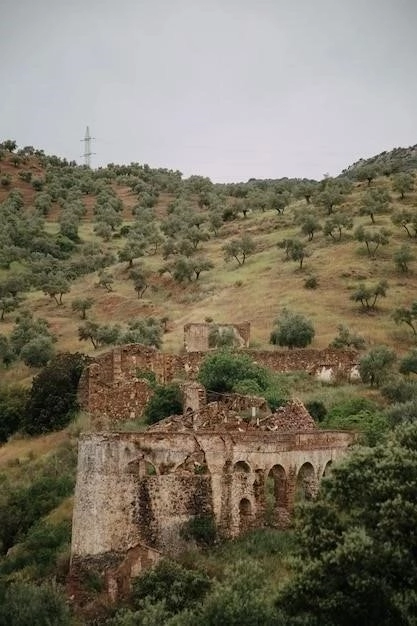Nestled amidst the rugged hills of Maharashtra, India, Tikona Fort stands as a testament to a bygone era, its triangular shape piercing the sky. This architectural marvel, also known as Vitandgad Fort, is a popular destination for history enthusiasts and adventure seekers alike.
History
Believed to have been constructed between the 7th and 8th centuries AD, Tikona Fort has witnessed the ebb and flow of power struggles in the region. While the early history remains shrouded in mystery, it is known that the fort was under the control of the Bahamani Sultanate before falling into the hands of the Nizam Shahi dynasty. In the 17th century, it was incorporated into the Mughal Empire under the reign of Emperor Aurangzeb. Eventually, like many other forts in the region, Tikona Fort came under Maratha control during the reign of Shivaji Maharaj.
Architecture and Features
Tikona Forts most striking feature is its unique triangular shape, which gives it a commanding presence atop a hill with a height of approximately 3500 feet above sea level. The fort is renowned for its robust fortifications, including:
- Large doorways: These imposing entrances hint at the forts former grandeur and defensive capabilities.
- Seven water tanks: A testament to the forts self-sufficiency, these tanks collected rainwater, ensuring a water supply even during sieges.
- Trimbakeshwar Mahadev Temple: Dedicated to Lord Shiva, this ancient temple within the forts walls adds a layer of spiritual significance to the site.
- Satvahan Caves: These caves, believed to date back to the Satvahana dynasty, offer a glimpse into the regions ancient past.

Trekking to Tikona Fort
Today, Tikona Fort is a popular trekking destination, attracting visitors from Mumbai, Pune, and beyond. The trek itself is considered relatively easy, making it suitable for both seasoned trekkers and beginners. The trail winds through picturesque landscapes, offering breathtaking views of the surrounding hills, lush greenery, and the serene Pawna Lake.
How to Reach Tikona Fort
Tikona Fort is well-connected and accessible by both road and rail:
- By Train:
- The nearest railway station for those traveling from Mumbai is Lonavala.
- For those coming from Pune, Kamshet is the closest railway station.
From either station, taxis or local buses are available to reach the base of the fort.
- By Road:
- Tikona Fort is well-connected by road, and visitors can drive directly to the base village.
- The Mumbai-Pune Expressway provides convenient access for those traveling from either city.

Preservation Efforts
Recognizing the historical and architectural significance of Tikona Fort, there have been efforts to preserve and restore this historical gem. Local communities and history enthusiasts have undertaken initiatives to maintain the forts structure and prevent further deterioration.

Conclusion
Tikona Fort stands as a proud reminder of Maharashtras rich history and architectural brilliance. Its strategic location, robust construction, and captivating views make it a must-visit for anyone traveling to the region. Whether you are a history enthusiast, an adventure seeker, or simply in search of natural beauty, Tikona Fort offers a unique and unforgettable experience.
Experiencing Tikona Fort
A visit to Tikona Fort offers a multifaceted experience, appealing to a broad spectrum of interests. Heres what awaits visitors:
A Glimpse into the Past
The forts well-preserved architecture and strategic layout offer tangible connections to a bygone era. Walking through the massive gateways, exploring the ancient water tanks, and observing the defensive structures allows visitors to engage with the forts historical significance firsthand. The Trimbakeshwar Mahadev Temple, though smaller in scale, adds a spiritual dimension, reflecting the intertwining of religious practices and military life in the past.
A Trekkers Paradise
The trek to Tikona Fort is a rewarding experience, suitable for a range of fitness levels. The trail, while ascending steadily, is well-defined and not overly strenuous. The ascent provides ample opportunities to pause and soak in the panoramic vistas. The panoramic views from the summit, encompassing the lush valleys, shimmering waters of Pawna Lake, and the neighboring forts of Tung, Lohagad, and Visapur, are truly awe-inspiring.
Photography and Nature
Tikona Fort is a photographers delight, offering breathtaking landscapes, dramatic architectural elements, and a play of light and shadow throughout the day. The surrounding natural beauty, particularly during the monsoon season when the hills are adorned in vibrant greenery, provides a stunning backdrop for capturing memorable images. The site is also ideal for birdwatchers, as the area is home to a variety of avian species.

Planning Your Visit
To make the most of your visit to Tikona Fort, consider these tips:
- Best time to visit: The months from June to February offer the most pleasant weather for trekking and exploration. Monsoon season (June to September) transforms the landscape into a verdant paradise, while the cooler months (October to February) provide comfortable temperatures for outdoor activities.
- Essentials to pack: Wear comfortable footwear suitable for trekking. Carry ample water, snacks, sunscreen, a hat, and a light jacket, as the weather can be unpredictable. A walking stick can be helpful, especially during the descent.
- Respecting the heritage: Tikona Fort is a protected monument. Visitors are urged to be respectful of the sites historical and cultural significance. Avoid littering, defacing structures, or engaging in any activities that could compromise the forts integrity.
A visit to Tikona Fort is a journey through time, offering a harmonious blend of history, adventure, and natural splendor. Its a destination that allows you to reconnect with the past while immersing yourself in the beauty of the present.










